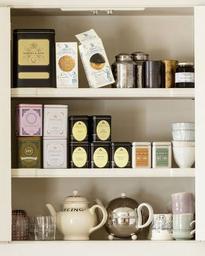White tea is made from the young tea bud. It is plucked just before the leaf opens on the stem and is air-dried to lock in its color and flavor. The chlorophyll is not mature in this bud, which gives it its "white" appearance. Sometimes we add flavors to make delicate and delectable teas. Look for gently sweet notes ranging from honeysuckle to light maple sap, citrus fruit flavors like orange and lemon, and wisps of floral aromas, evoking jasmine and rose. The delicacy of white tea leaves allows wonderfully subtle flavors to flourish in your freshly brewed cup! To learn more, check out White Tea 101.
Filters
Filters
19 products
Sort by
Sort by
Brewing White Tea
White tea is more delicate than green or black tea. As a starting point, brew time should be 2 to 3 minutes using 175°F water. This helps protect flavor and aroma. For more flavor, add more tea, not more time. For specific instructions, be sure to read your Harney & Sons tin for more information.
How much caffeine is in White Tea?
Caffeine levels in white tea buds are slightly higher than those of green or black tea. This extra caffeine helps protect the plant from predators during the early growth stages. All tea leaves contain natural levels of caffeine, but how you brew your tea will determine the final amount of caffeine in your cup. To keep caffeine levels low, consider the following:- Brew your tea properly with the correct amount of water, temperature, and brew time.
- Use loose-leaf tea. Teabags tend to contain smaller, cut leaves, resulting in higher caffeine extraction.
- Try a white tea blend. Blends tend to contain other ingredients that may be naturally caffeine-free.

